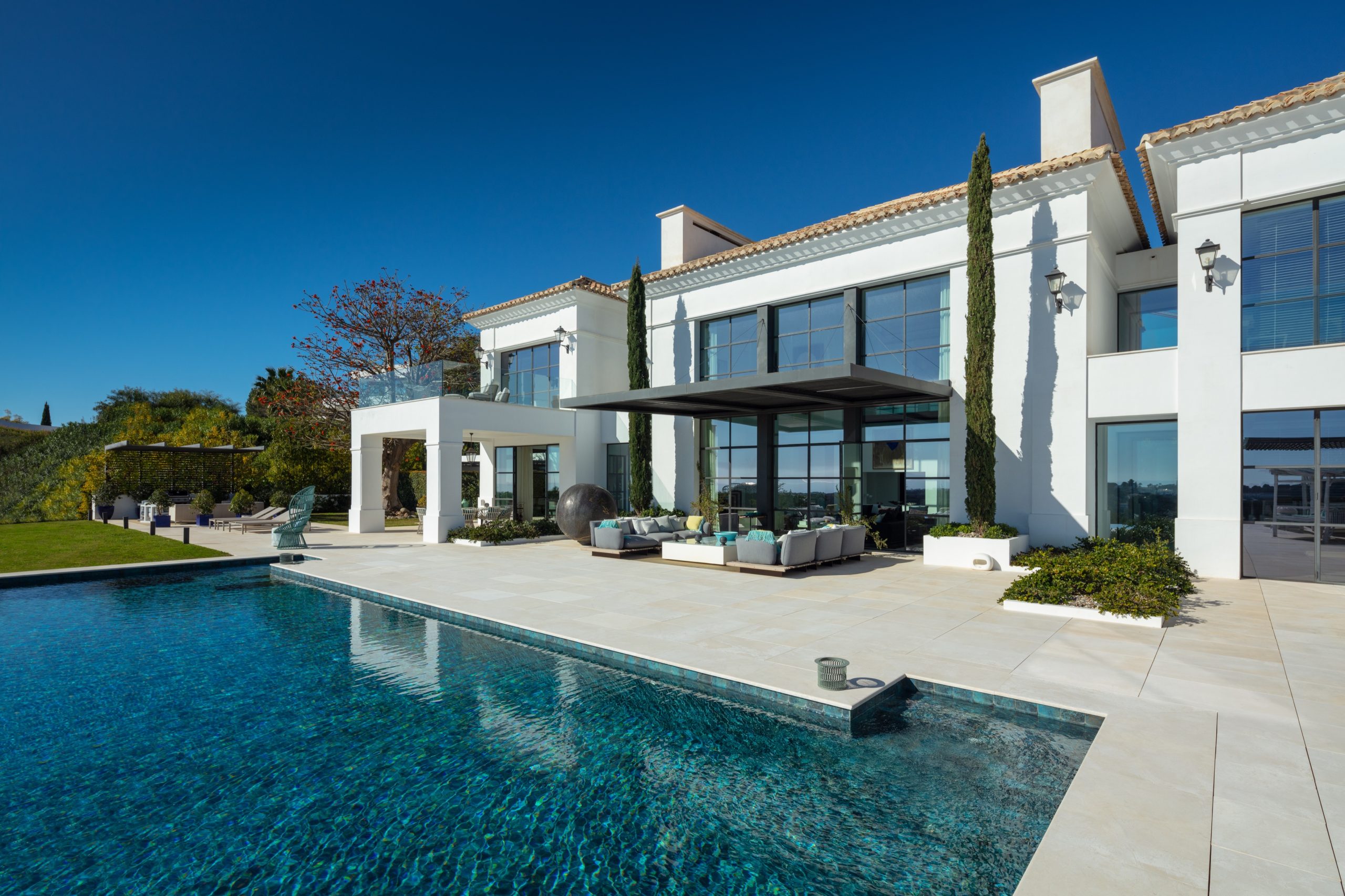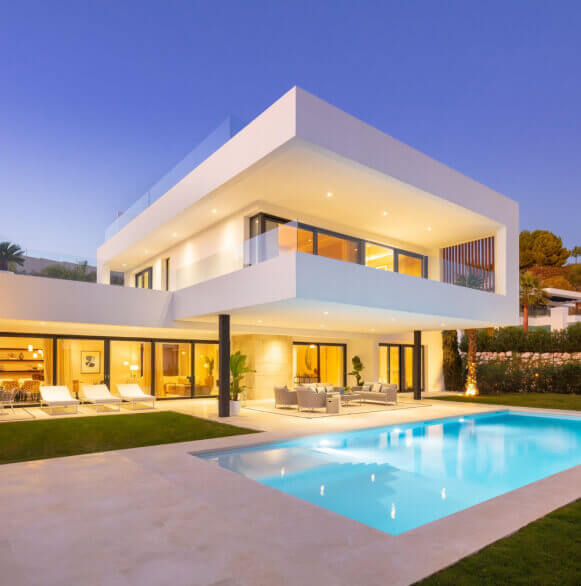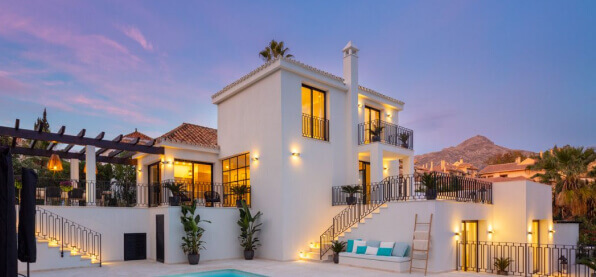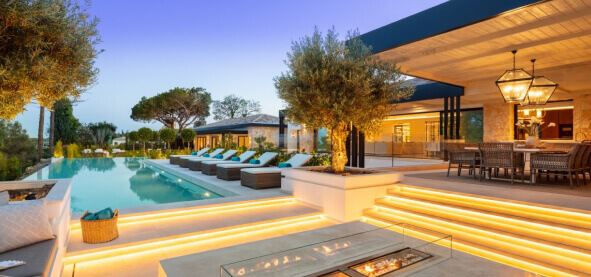Architecture and Sustainability in Marbella
Architecture and
Sustainability in MarbellaDesign has always been an important consideration for people owning a property in Marbella, but now the energy-efficiency and carbon footprint of the home they want to buy or build is also of increasing relevance. This means that these days modern property for sale in Marbella has to satisfy both aesthetic and sustainability criteria as well as being a comfortable, practical and beautiful home.
The first villas built in Marbella followed the example of the now-legendary Marbella Club Hotel, which arose on what is now the prestigious Golden Mile avenue that links Marbella town and Puerto Banús. They were, in reality, more luxurious versions of traditional white-washed Andalusian country homes, but by the 1960s and 1970s the first architecturally styled modern villas began to be built within the Marbella area.
Some of the finest examples are now listed as being of rare architectural value, all the more since the style soon gave way to a revival of traditional architecture that continued on until the late 2000s, by which time the previously predominant white plaster had given way to various shades of yellow, peach and terracotta – the latter inspired by an original design created by the late architect Melvin Villaroël.
The first villas built in Marbella followed the example of the now-legendary Marbella Club Hotel, which arose on what is now the prestigious Golden Mile avenue that links Marbella town and Puerto Banús. They were, in reality, more luxurious versions of traditional white-washed Andalusian country homes, but by the 1960s and 1970s the first architecturally styled modern villas began to be built within the Marbella area.
Some of the finest examples are now listed as being of rare architectural value, all the more since the style soon gave way to a revival of traditional architecture that continued on until the late 2000s, by which time the previously predominant white plaster had given way to various shades of yellow, peach and terracotta – the latter inspired by an original design created by the late architect Melvin Villaroël.
A shift to modern
The past decade has been dominated by what is in reality a return to modern architecture. Over the past ten years minimalist white-toned villas and apartments with open-plan interiors and large glass frontage have been more prominent than ever, and increasingly accompanied by high-tech features such as home automation systems that control heating/cooling, security, shutters, irrigation and also the property’s entertainment options.
The shift has caused a before-and-after watershed in the Marbella housing market, creating two distinctive markets of 1) older resale properties and 2) the more in-demand modern new-build homes featuring a long list of mod cons. Modern construction continues to focus on contemporary architecture, but it has moved away somewhat from white-toned minimalism to embrace more natural colours, materials and a more welcoming ambience.
The shift has caused a before-and-after watershed in the Marbella housing market, creating two distinctive markets of 1) older resale properties and 2) the more in-demand modern new-build homes featuring a long list of mod cons. Modern construction continues to focus on contemporary architecture, but it has moved away somewhat from white-toned minimalism to embrace more natural colours, materials and a more welcoming ambience.

And sustainable homes
The modern homes built over the past decade have also featured increasingly modern construction materials, standards and techniques, incorporating the latest engineering and electronics to produce houses that are a far cry from the charming but rather more basic ones that occasionally suffered from humidity and were hard to heat in winter. Build quality had already begun to improve in the 1990s and 2000s, but has taken a big leap forward in recent years.
This has resulted not only in greater durability and shorter build times, but also in hugely improved heat and sound insulation, fire protection, reduction of solar glare and more comfortable and energy-efficient heating and cooling systems. Marbella properties are now not just more comfortable, but they also require less heating and cooling, and are therefore more energy efficient and cheaper to maintain.
This, together with quality natural materials, good orientation for optimal views and breezes, as well as methods of construction and landscaping that are more in harmony with nature, reduce the carbon footprint of Marbella homes and make them increasingly sustainable, with more and more developers now producing Passive House homes or qualifying for strict BREEAM certification.
It shows architects and builders alike are responding to the need for more environmentally friendly real estate in Marbella, and buyers are loving these stylish, efficient and comfortable new homes.
This has resulted not only in greater durability and shorter build times, but also in hugely improved heat and sound insulation, fire protection, reduction of solar glare and more comfortable and energy-efficient heating and cooling systems. Marbella properties are now not just more comfortable, but they also require less heating and cooling, and are therefore more energy efficient and cheaper to maintain.
This, together with quality natural materials, good orientation for optimal views and breezes, as well as methods of construction and landscaping that are more in harmony with nature, reduce the carbon footprint of Marbella homes and make them increasingly sustainable, with more and more developers now producing Passive House homes or qualifying for strict BREEAM certification.
It shows architects and builders alike are responding to the need for more environmentally friendly real estate in Marbella, and buyers are loving these stylish, efficient and comfortable new homes.


